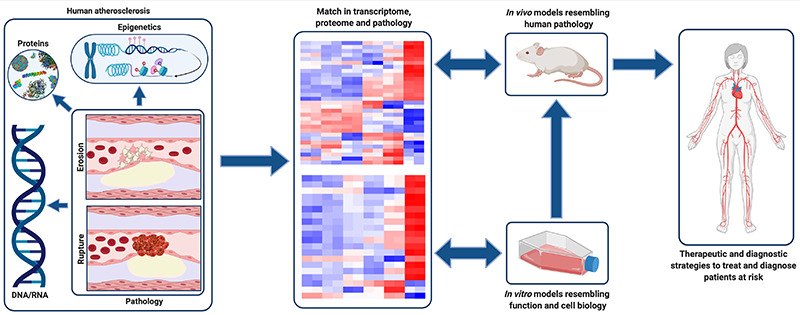For decades, the pathological definition of the vulnerable plaque led to invaluable insights into the mechanisms that underlie myocardial infarction and stroke. Beyond plaque rupture, other mechanisms, such as erosion, may elicit thrombotic events underlining the complexity and diversity of the atherosclerotic disease. Novel insights, based on single-cell transcriptomics and other “omics” methods, provide tremendous opportunities in the ongoing search for cell-specific determinants that will fine-tune the description of the thrombosis prone lesion. It coincides with an increasing awareness that knowledge on lesion characteristics, cell plasticity and clinical presentation of ischemic cardiovascular events have shifted over the past decades. This shift correlates with an observed changes of cell composition towards phenotypical stabilizing of human plaques. These stabilization features and mechanisms are directly mediated by the cells present in plaques and can be mimicked in vitro via primary plaque cells derived from human atherosclerotic tissues.
In addition, the rapidly evolving of sequencing technologies identify many candidate genes and molecular mechanisms that may influence the risk of developing an atherosclerotic thrombotic event – which bring the next challenge in sharp focus: how to translate these cell-specific insights into tangible functional and translational discoveries?
Full text is here.


